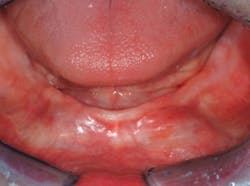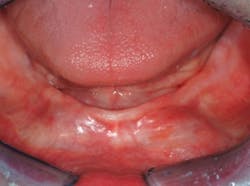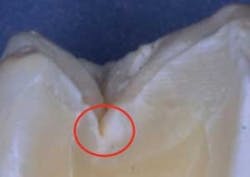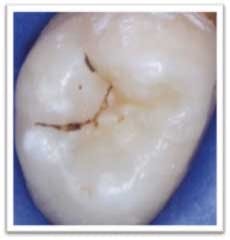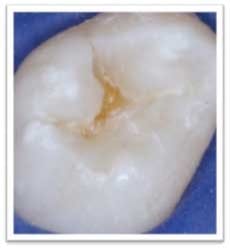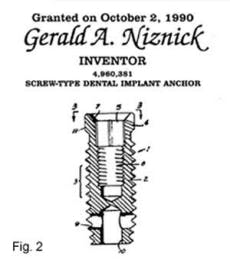Ask Dr. Christensen
In this monthly feature, Dr. Gordon Christensen addresses the most frequently asked questions from Dental Economics® readers. If you would like to submit a question to Dr. Christensen, please send an e-mail to [email protected].
For more on this topic, go to www.dentaleconomics.com and search using the following key words: aluminum oxide, air-abrasion unit, air-slurry polisher, Dr. Gordon Christensen.
Q Two devices have me confused. Some of my dentist friends are enthused about cutting tooth structure with aluminum oxide expelled from an air-abrasion unit. Others with whom I have spoken are using sodium bicarbonate in an air-slurry polisher. I have not used either of the devices. Do both of them cut tooth structure? If so, which is the best for minimal tooth preparations? Can staff members legally use these devices?A Although both of these concepts are highly useful for various aspects of oral therapy, neither of them are very popular in practice. In my opinion, both should be used more in general and pediatric practices. I will answer your questions and discuss the numerous advantages and disadvantages of each type of device.Air-slurry polishers are extremely valuable for numerous clinical procedures. It remains a mystery to me why more dentists do not use them. The following information will describe the concept and explain the uses (Fig. 1).
The handpiece of an air-slurry polisher emits an air and water slurry containing either sodium bicarbonate or aluminum trihydroxide as an abrasive. Both of these chemicals are water soluble. They start out as relatively large granules, but as they combine with water, they soften and dissolve, becoming smaller and smaller. The slurry is propelled by connecting the device to the in-house air and water supplies with a “quick disconnect.” Numerous brands of air-slurry polishers are available, including the Prophy-Jet and the Cavitron® Jet Plus™ from DENTSPLY, the STAINBUSTER® from Emery Dental, Inc., the PROPHYflex 3 from KaVo, the Prophy Pencil from Parkell, and others.
Fig. 1 — The Cavitron® Jet Plus™ from DENTSPLY combines the Cavitron magnetostrictive ultrasonic scaler and an air-slurry polisher in one compact unit. Most users of this device find it easy to use and reliable.
These abrasives are atraumatic to enamel, but when used aggressively, they will cut dentin surfaces. The devices may be legally used by dental hygienists or assistants in most locations because they do not cut enamel and avoidance of contact to dentin is possible.
Air-slurry polishers
Some of the uses of air-slurry polishers are:
► During oral prophylaxis. Air-slurry polishers provide easy removal of coffee, tea, or tobacco stains. They can easily remove many other objectionable discolorations on the surfaces of teeth, especially in the grooves where the stains are almost impossible to remove with other methods. These stains cannot be easily or completely removed by abrasives in rubber prophy cups or by brushes. Dental hygienists are very pleased with this use.
► Before use of the DIAGNOdent by KaVo or any other caries-detection device that uses light as the means of identifying caries. The DIAGNOdent caries detection device emits a diode laser beam. The laser beam is impeded or blocked by any stain or calculus on tooth surfaces or by dental caries. If stain or calculus is allowed to remain on tooth occlusal surfaces being tested during use of the DIAGNOdent, the device may provide false positive readings, indicating caries presence when lesions are not present.
The following technique is one I suggest when using the DIAGNOdent:
When a new patient receives an initial exam for caries, the caries detection task may easily be delegated to an educated staff person, dental hygienist, or dental assistant. The teeth’s occlusal surfaces are cleaned of all stain and calculus by using an air-slurry polisher (Fig. 2).
All of the teeth with grooves — usually 18 to 22 of them — can be cleaned easily with an air-slurry polisher in a few minutes. The residue produced by the air-slurry polisher must be washed away thoroughly, or it may also produce false positive DIAGNOdent readings. The DIAGNOdent is used on all grooves, and the readings it produces will be far more accurate than if the stain or calculus is allowed to remain on the teeth.
Fig. 2 — Grooves in occlusal surfaces of teeth are deep and inaccessible to almost every dental instrument except an air-slurry polisher.
► Before placing dental sealants or preventive resin restorations. Recent research has indicated that sealing the occlusal grooves of teeth with active caries in them does not prevent further caries activity. Additionally, as further proof of continued caries activity, clinicians have noted highly active caries under many sealants when the sealants have been removed.Using an air-slurry polisher on the grooves of teeth before placing sealants produces some useful information.
If stain remains in the grooves after using the air-slurry polisher, the likelihood of caries being present is high. Such teeth are better treated by cutting tooth preparations in them with either an air-abrasion unit using aluminum oxide, or a carbide or diamond bur to remove the caries. Small burs, such as the SS White Fissurotomy® burs, are excellent for this purpose.
A recently published ADA statement indicated that sealants should be used on teeth that are determined to be intact and not on overtly carious teeth. This statement is contrary to the way they are being used in many practices, where carious lesions are covered — i.e., “sealed in” with resin.
An additional advantage to using air-slurry polishing during the sealant technique is that plaque can be removed from the deepest portion of the grooves, thus allowing the acid etch to penetrate into these grooves. The acid cannot penetrate plaque! In my opinion, there is no way other than to use burs or air-abrasion units to clean the plaque from the bottom of grooves. When an air-slurry polisher is used to remove the plaque, a staff person can legally operate it.
When the tooth is cut, the procedure must be done by a dentist, thus raising the fee for the patient and removing tooth structure. When the plaque is removed from the grooves, the sealants stay on the acid-etched tooth until the resin actually wears off. When the plaque is not removed, some or all of the sealant material comes off over the first few years.
Research shows that after five years of service, only 50% of sealants are still in place. I contend that this undesirable characteristic is directly related to lack of plaque removal from the grooves and inhibition of proper acid etch. Use an air-slurry polisher!
In summary, air-slurry polishers may be used by staff, they do not cut enamel, and they have several highly useful advantages. The only significant disadvantage to this concept is that the abrasive is somewhat messy, and sometimes the devices plug during service and must be cleaned and unplugged for continued use.
Air-abrasion and hydro-abrasion units
Air-abrasion and hydro-abrasion units usually use increased air pressure over normal dental compressors. They propel extremely small particles of aluminum oxide (usually 27 to 50 microns in diameter) with or without water onto tooth surfaces, thus cutting enamel and making a nontraumatic, relatively painless and conservative tooth preparation. A popular air-abrasion unit, the PrepStart, is produced by Danville Materials (Fig. 3). Again, as with air-slurry polishers, I do not understand why more dentists do not use them.
In recent years, some companies have added water lavage to the aluminum-oxide particles, thus reducing the dust produced by the devices. However, a muddy residue is produced by this concept instead of dust. A popular example product is the Danville Materials PrepStart H20 hydro-abrasion cavity prep unit.
These units cut tooth structure and must legally be used by a dentist. The primary use of air-abrasion or hydro-abrasion units is to make conservative tooth preparations, which they do very well (see Figs. 4-6). Many dentists are convinced that these devices should have a major place in restorative dentistry, while others have found them to be too messy. When using adequate air evacuation, the dust can be controlled.
In summary, air-abrasion and hydro-abrasion units use aluminum oxide under air pressure, with or without water, to cut tooth structure atraumatically. They must be used by a dentist. They produce significant debris, which limits their acceptance by some dentists, but which others do not find objectionable. They have significant advantages in restorative dentistry.
Less popular concepts
The lack of universal use of these two concepts still amazes and frustrates me. Both of them are singular in their advantages. Air-slurry polishers do not have a competitive product or concept for removal of plaque, stain, and minimal calculus on occlusal surfaces. All other methods are slower and less reliable in their ability to remove these materials.
Air- and hydro-abrasion have been shown to cut tooth structure relatively easily without the objectionable cracking of enamel often encountered with a carbide bur. These techniques are relatively painless for most patients, thus reducing or eliminating use of local anesthetics.
I suggest that most general and pediatric dentists would do well to use both air-slurry polishers and air-abrasion or hydro-abrasion units for the purposes I have indicated. Many dental schools and practitioners are teaching and using far more conservative procedures than in the past, and both of these concepts support minimally invasive procedures.
Fig. 6 — The tooth has been restored with a conventional fully filled resin-based composite.
Our most recent DVD, “Sealants and Preventive Resin Restorations” (Item No. V5143), shows the use of both air-abrasion and air-slurry polishers for sealants and conservative restorative procedures (often called preventive resin restorations), along with the newest and best techniques for both concepts. Further information is available from Practical Clinical Courses online at www.pccdental.com or by phone at (800) 223-6569.
Dr. Christensen is a practicing prosthodontist in Provo, Utah. He is the founder and director of Practical Clinical Courses, an international continuing-education organization initiated in 1981 for dental professionals. Dr. Christensen is a cofounder (with his wife, Rella) and senior consultant of CLINICIANS REPORT (formerly Clinical Research Associates), which since 1976 has conducted research in all areas of dentistry.
